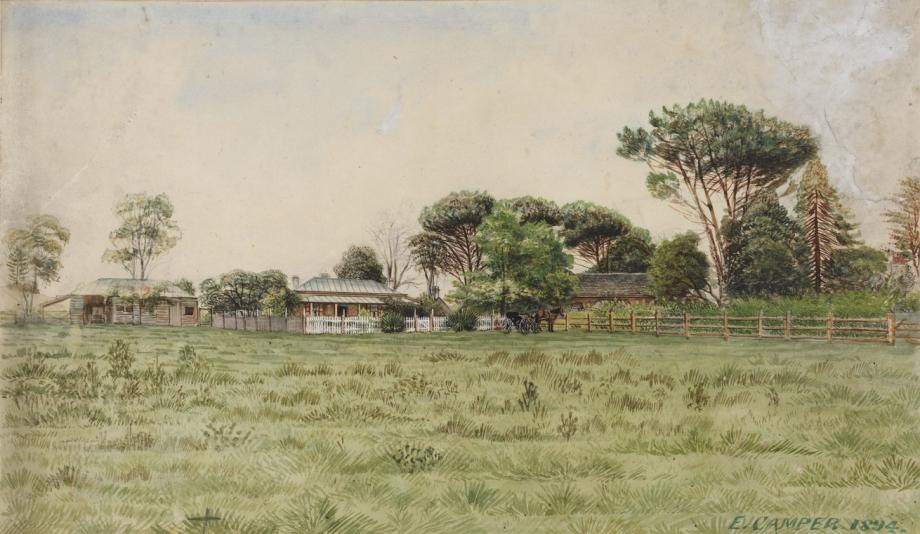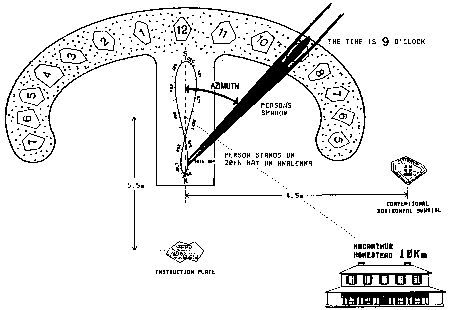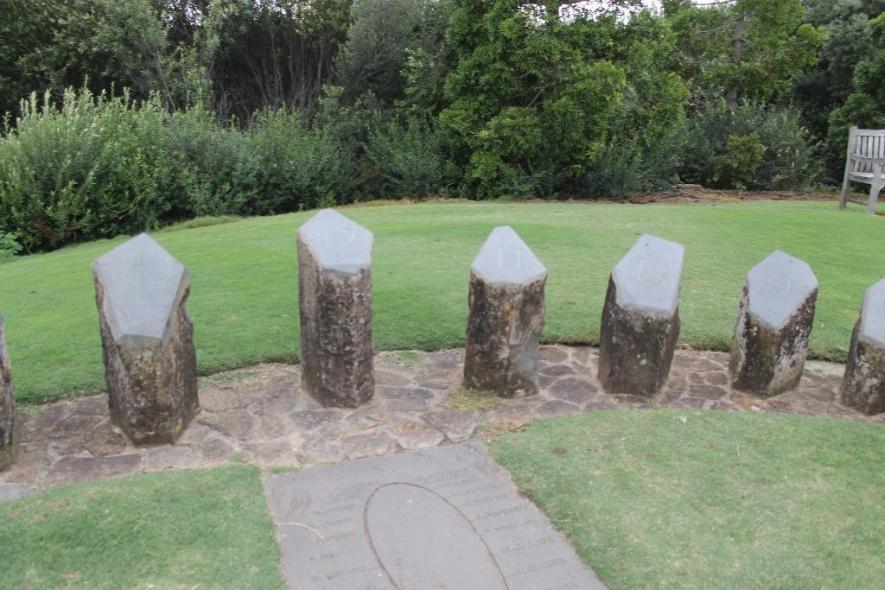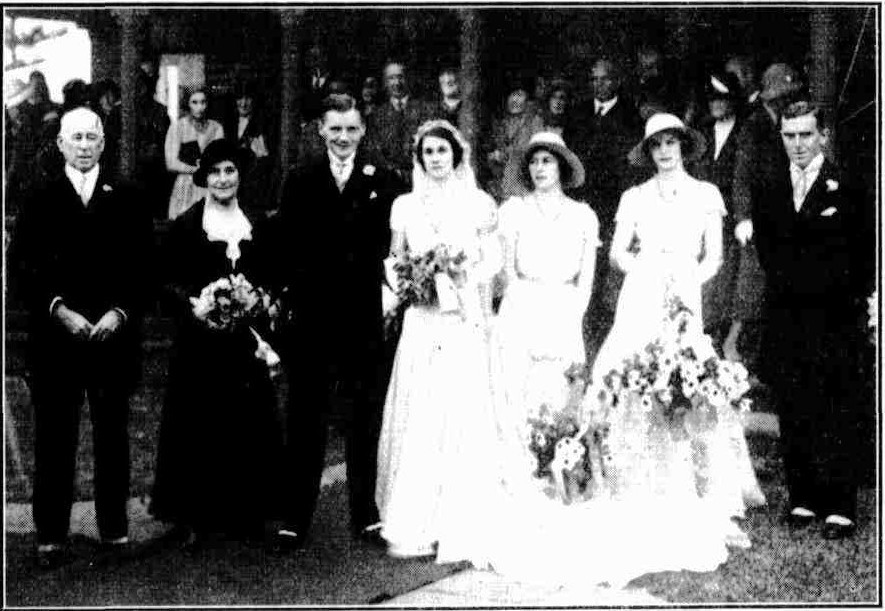May 10 - 16, 2015: Issue 213
Sundial of Human Involvement at The Australian Botanic Garden Mt Annan – Royal Botanic Gardens & Domain Trust Australian Botanic Garden

Sundial of Human Involvement at The Australian Botanic Garden Mt Annan – Royal Botanic Gardens & Domain Trust Australian Botanic Garden
May 10, 2015
At Easter we had a few days off and went on some road trips to places a little way from here to explore what is there to share what we learned with you. One we’d like to begin with, and especially for today, Mother's Day 2015, as it illustrates how much daughters can love their mother's, and is a fitting tribute of such love, is the ‘Sundial of Human Involvement in The Australian Botanic Garden that is at Mount Annan.
The ‘Sundial of Human Involvement is an ‘analemmatic sundial’, and this too can refer back to mums, and the loving light they cast across the whole of our lives... in a poetical, maths meets art way.
An analemmatic sundial is a particular kind of horizontal sundial in which the shadow-casting object is vertical, and is moved depending on the date, or to be more precise, depending on the declination of the sun on a given day.
The time is read from the dial by noting where the shadow cast by the vertical pin crosses hour points laid out on an ellipse. If we make the dial on the ground and large enough, we can use the shadow cast by a person. This is what the ‘Sundial of Human Involvement’ can do!
This makes it very different from the traditional sundial you may see in parks and gardens where the shadow is cast by a triangular shaped wedge. The analemmatic sundial is perfect as a piece of large mathematical sculpture.
Maths and Art! Fantastic! And guess what … you can make one. More about that in the link below – just remember there is a difference between ‘True North’ and the magentci north you get from a compass.
First a little about the Sundial of Human Involvement in The Australian Botanic Garden at Mount Annan.
From their website:
The Australian Botanic Garden Mount Annan is the native plant garden of the Royal Botanic Gardens & Domain Trust. It covers 416 hectares, making it the largest botanic garden in Australia. The plantings are designed to display the diversity of the Australian flora and will eventually include many of our 25,000 known plant species. The Australian Botanic Garden displays around 2000 of these, set in 416 hectares of hills and lakes.
This great Garden also features outdoor sculptures, free gas barbecues, a restaurant and a gift shop which sells plants and we spotted quite a few birds that love wetlands in some parts of the grounds.
The Australian Botanic Garden is where you will find the Seed Bank too – for plants!
You will find the Australian Botanic Garden in the Camden district, a valley it took us about an hour and a half to reach in the car. This is also a historic part of Sydney – there’s Cowpastures Road, which was one of the first roads in the new colony when European settlers first arrived.
The Sundial of Human Involvement was given to the Garden and dedicated to a wonderful mum by her two daughters, but who is also a lady from one of the early families settling in Camden and related to through marriage John Macarthur – the gentleman most well known for his sheep enterprises.
John Macarthur, 1767 – 10 April 1834, was a British army officer, entrepreneur, politician, architect and pioneer of settlement in Australia. He is recognised as the pioneer of the wool industry that was to boom in Australia in the early 19th century and become a trademark of our nation.
John Macarthur was the architect of Elizabeth Farm House, his own residence in Parramatta, and as the man who commissioned architect John Verge to design Camden Park Estate in Camden, New South Wales, which can be seen from the hill which the Sundial is on. This is also called the Macarthur Homestead in some descriptions.
He spelled his surname "M'Arthur" for most of his life, occasionally varied it to "MacArthur". The spelling "Macarthur" (with a lower case "a") became established very late in his life.

View of Elizabeth Farm showing the exact spot where the first sheep were shorn in Australia, 1894 / E. Camper Digital Order Number: a5525001, courtesy State Library of NSW
The Sundial
The Sundial of Human Involvement is just off Caley Drive in the Garden. There is a sign and you walk up the path on the right hand side of the road to Sundial Hill, and it’s located near a saddle of Mount Annan, the highest vantage point in this place. From here there is a spectacular 360 degree view of the surrounding countryside. On a clear day you can see the city of Sydney to the north-east and the Blue Mountains to the west.
It’s very clean air in Camden and there are still fields with cows and horses to be seen.
From the website of the Australian Botanic Garden:
The Sundial of Human Involvement is a rare type of sundial that uses a person’s body to cast a shadow onto hour markers and to tell the time. The position of the person is adjusted throughout the year following a figure of eight pathway, or analemma - so this type of sundial is known as an analemmatic sundial.

courtesy The Australian Botanic Garden webpage
Telling the time
 By following the instructions on the nearby bronze plate you can tell what time it is. When your feet are on the correct date, clock time is given by the position of your shadow, providing you are tall enough - you might have to raise your hands above your head to become a bit taller! Check the time on the conventional horizontal sundial (accurate to within 1 or 2 minutes) on your right, but remember to follow all the instructions correctly!
By following the instructions on the nearby bronze plate you can tell what time it is. When your feet are on the correct date, clock time is given by the position of your shadow, providing you are tall enough - you might have to raise your hands above your head to become a bit taller! Check the time on the conventional horizontal sundial (accurate to within 1 or 2 minutes) on your right, but remember to follow all the instructions correctly!
How accurate is the Sundial of Human Involvement?
The simple method of telling the time using the Sundial of Human Involvement does not give precise clock time throughout the whole year. However, the small errors lie within the width of the shadow and occur in the early morning and late afternoon at times of the year corresponding to the maximum and minimum of the equation of time (see below). The novelty value of being able to read clock time directly from a sundial well compensates for the slight mathematical imperfections introduced!
About this Maths Sculpture itself:
The hour markers
The basalt crystals used as hour markers in the Sundial of Human Involvement came from the Blue Mountains Botanic Garden. These crystals are featured in the construction of the walls within the Garden. The tops of the basalt columns used for the sundial were cut off at an angle of 35 degrees, and the hour numbers were chiselled into the stone. The polished faces have been waxed to improve their appearance and make the numbers more clearly visible.
The analemma plate
The basalt slab for the analemma came from Port Fairy in Victoria. This basalt originates from the volcanic region of south-west Victoria and is a dark grey-black colour, with little crystal face reflection when broken. In colour, texture and gas bubble content it is remarkably similar to the basalt columns from Mount Tomah.
Solar time and clock time
Most other types of sundial show ‘solar time’ and you need to make certain corrections before the sundial will show the same time as indicated on your watch. The first correction, called the equation of time occurs because of the tilt of the earth’s axis of rotation and because of the elliptical shape of the earth’s orbit around the sun. The sum of these effects varies with the date but is the same everywhere on earth. The second correction occurs because of the difference in time between the sundial's location and the local time zone longitude. This correction is constant throughout the year, but is different for different locations.

The Sundial of Human Involvement incorporates the effects of longitude into the position of the basalt crystals used as hour markers, while the equation of time corrections are built into the central analemma.
 Designers of the Mount Annan sundial
Designers of the Mount Annan sundial
The Sundial of Human Involvement was designed by Dr Margaret Folkard and Mr John Ward of Sundials Australia in Adelaide. The stone was carved by Adelaide sculptor Mr Silvio Apponyi. You can see two other different types of sundials, also designed by Sundials Australia, at our other Gardens - an equatorial sundial at the Blue Mountians Botanic Garden and an armillary sphere sundial at the Royal Botanic Garden.
The Sundial of Human Involvement was completed in 1989, dedicated to the memory of Winifred Macarthur-Onslow, a gift to the Australian Botanic Garden from her daughters.
Right: MISS WINIFRED OWEN, Whose wedding with Mr. Edward Macarthur Onslow, of Camden, has been arranged to take place on March 30 at her home, Bonshaw, Wollongong. — (Photo: Dayne.) Women's World. (1932, January 27). Sydney Mail (NSW : 1912 - 1938), p. 20. Retrieved from http://nla.gov.au/nla.news-article160080432
Winifred married Edward Macarthur-Onslow, the second son of Francis Arthur Macarthur-Onslow, who was the sixth son of Arthur Alexander Walton Onslow and his wife Elizabeth, the only child of James Macarthur and his wife Emily, née Stone. James Macarthur was the fourth son of John Macarthur and born on 15 December 1798 at Elizabeth Farm, Parramatta. Bit of a mouthful if said in one breath - but a good demonstration that only seven generations can take us from where we stand today, in this still beautiful area, to where one of the first farms was built. Another analogy of time in a way, that may meet that shown through the Sundial of Human Involvement and getting involved via your body to tell the time!
The historic Macarthur homestead can be seen in a south-west direction from the sundial.
And this is Winifred and Edward on their wedding day - the whole family, on both sides, is worth researching if you like your History, and as everyone did so much for Australia and her development, or served in conflicts to protect her, you will find some wonderful insights should you look - some amazing people who did amazing things:

Wedding at W ollongong St. Michael's Church of England, Wollongong, was the setting for a pretty wedding last week, when Miss Winifred Hall Owen was married to Mr. Edward Macarthur Onslow The bride is a daughter of the late Mr. William Hall Owen and of, Mrs. Harold Cox, of Bonshaw, Wollongong, and the bridegroom a son of Mr. and Mrs. F. A. Macarthur Onslow, of Macquarie Grove, Camden. Wearing a gown of parchment-tinted organdi mounted on satin, with a Brusselslace veil (lent by Miss Macarthur Onslow), and carrying an armlet of orange blossoms, the bride was attended by her sister, Miss Ruth Owen, and Miss Rosemary Shepherd. Their frocks of parchment-tinted organdi were worn with straw hats of the same shade, banded with green velvet, and they carried green lacquered baskets filled with buttercups and daisies. Mr. Jim Pilcher was best man, and Mr. Sep. Osborne groomsman. Mr. and Mrs. Harold Cox received the guests at Bonshaw. The picture shows the bridal party on the lawns at Bonshaw. The bride's mother and step-father are on the extreme left. For the Afternoon-Tea Tray. (1932, April 6). Sydney Mail (NSW : 1912 - 1938), p. 22. Retrieved from http://nla.gov.au/nla.news-article160081625
The image we share was found in Trove - a great resource and digitisation project of our National Library of Australia where you can access many of the newspapers and all in them from the early 1800's on. This is an ongoing project so it's always worth trying again if you don't find what you;re looking for the first time.
When you find all these amazing things, should you wish to investigate anything for yourself, bear in mind that periodicals in some of these eras did not have telephones yet, or even telegraphs in some cases. Some of them may have been supplied with wrong information or are getting it wrong through poor research. You will find stories that conflict with others, people pronounced as doing this or that when they were actually doing something else.
Just goes to prove that getting it wrong, and printing anyway, is not a modern phenomenon - so always check each item at many sources, rely most on the most reliable or reputable, if there is one, and be circumspect even then too. Delving deeper will give you a 'feel' for what you're investigating though, whether a person, place or event and this makes going that bit further always worth the time and effort.
It's always a good idea to give credit where credit is due too - if someone has written something, or taken a photograph, and it was a few generations ago, they too are part of the story - the way they express themselves, what they did before and after. This is also a good way of ensuring if they did get it wrong you can figure out, perhaps, why, or if they clearly did their homework, reason they have got it mostly right - giving credit where credit is a great way to steer others to where these works are should they wish to follow the investigative path you have as well - just like we all now follow links to visit other pages and 'find out more'!
Making your own analemma
Find a room that has a wall with a window facing approximately north. Cover an area of this window about 400 mm square with black cardboard and cut a neat hole in the centre of the cardboard about 12-15 mm in diameter. The hole should be about 1.5 to 3.0 metres above the floor. Mark the position of the sun’s image on the floor (or wall) at the same time of the day, say 12 o’clock on your watch, every few days for a whole year.
Make sure you do not look directly into the sun.
After a year you will have an analemma traced out on the floor. By repeating this exercise at different times, say 9 o’clock, 10 o’clock, etc., you will get a family of analemmas.
Instead of a hole you can use a mirror about 50 mm square (or round) located on a window sill to produce analemmas on the ceiling and walls of a room.
Find out More
The Australian Botanic Garden: www.rbgsyd.nsw.gov.au/welcome/australian_botanic_garden
You can learn more about how to make one here: plus.maths.org/content/analemmatic-sundials-how-build-one-and-why-they-work
and here's a site to generate the needed dimensions and positions automatically so you can verify that you've got yours right: analemmatic.sourceforge.net/cgi-bin/sundial.pl
Unfortunately it was overcast when we climbed the hill to test it out, but we did get some pictures for you to illustrate what we're on about and why we were so impressed.
We’ll bring you some more about the great things at Australian Botanic Garden Mt Annan – including more about the one we found inspirational - the Seed Bank; for plants!

Above: Camden Park House painted by Conrad Martens Date of Work: 1843
Typed label verso: "The painting of "Camden Park House" by Conrad Martens dated 1843 was commissioned soon after the building was finished and sent by Mrs James Macarthur (nee Emily Stone) to her relatives in England. About the year 1900, Mrs J.W.Macarthur-Onslow when on a visit to England was given the picture by Mr Archie Norman of Bromley, Kent. It was bought back to Australia and hung at Gilbulla, Menangle. In 1931 it was moved to Camden Park House. When Mrs J.W.Macarthur-Onslow finally left Camden Park in 1947 the picture went with her. On her death in 1952 it passed to her daughter Mrs Elizabeth Enid Rothe". - Courtesy State Library of NSW - Digital Order Number: a4989002
Below: Camden Park House as it is today - Uploaded by 'Matilda' to Camden Park House Wikipedia page, 2006.



For my Mum - story and photos by A J Guesdon, 2015.